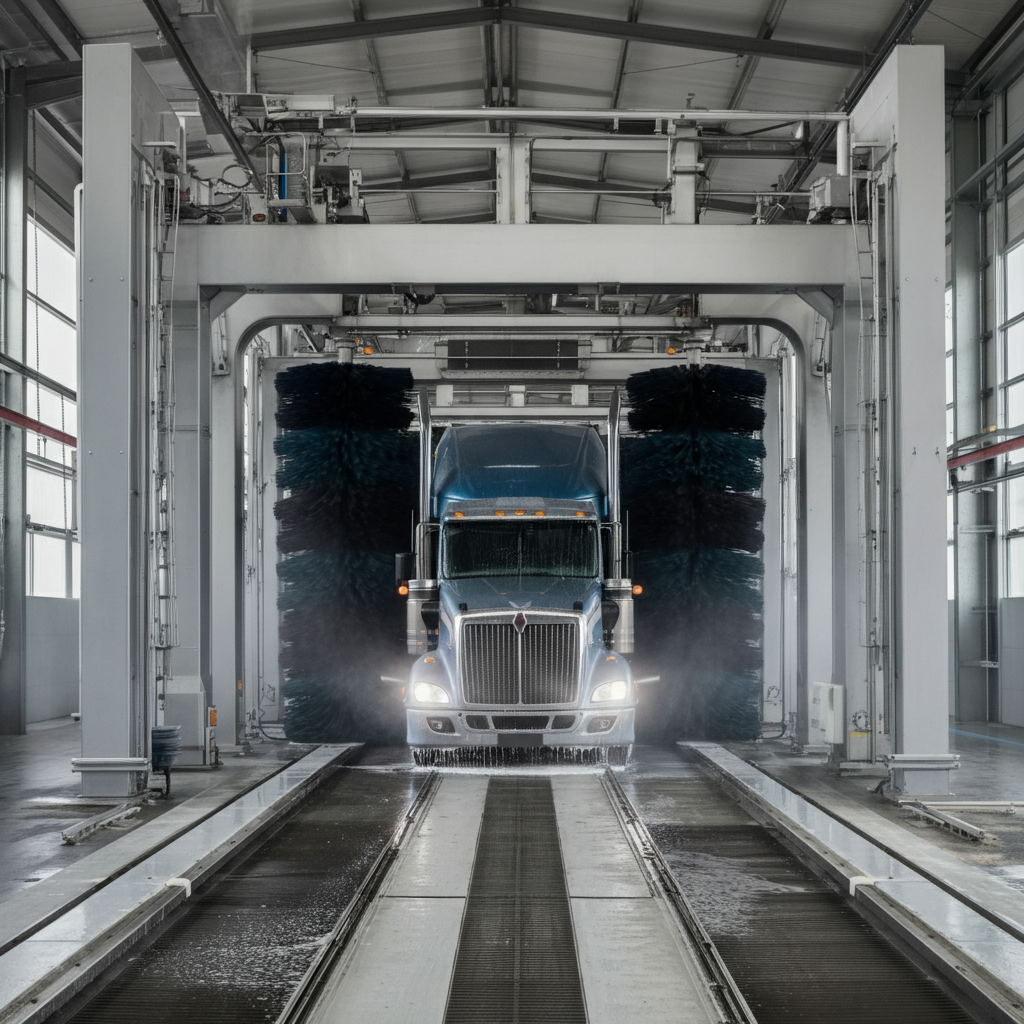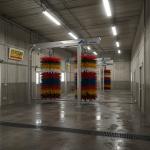For any business that relies on a fleet of commercial vehicles, maintaining a professional image and protecting valuable assets are top priorities. While manual washing has its place, the operational demands of medium to large fleets require a more efficient and reliable solution. Automated truck wash systems offer a powerful alternative, delivering significant advantages in efficiency, consistency, cost savings, and environmental responsibility.
These advanced systems are more than just a convenience; they are a strategic investment that can transform your fleet maintenance program. This article explores the compelling benefits of automation, explains how these systems work, and details why they have become the gold standard for modern fleet management.
What Are Automated Truck Wash Systems?
Automated truck wash systems are sophisticated setups designed to clean large commercial vehicles with minimal human intervention. They come in two primary configurations:
- Gantry (Rollover) Systems: The truck is parked in a wash bay, and a large, mobile frame (gantry) equipped with brushes, sprayers, and sensors moves back and forth along the length of the vehicle to perform the wash.
- Drive-Through Systems: The truck is driven slowly through a series of fixed arches, each dedicated to a specific stage of the wash cycle, such as applying pre-soak, high-pressure washing, friction brushing, and final rinsing.
Both types leverage technology like advanced sensors, programmable logic controllers (PLCs), and precise chemical injectors to deliver a thorough and safe wash, customized to the vehicle’s size and shape.
Unpacking the Key Benefits
1. Unmatched Efficiency and Throughput
Time is money in the transportation industry. Every hour a truck spends in the wash bay is an hour it is not on the road earning revenue. This is where automation creates its most immediate impact.
A manual wash of a tractor-trailer can take one or two workers over an hour to complete. In contrast, a drive-through automated system can wash the same vehicle in as little as three to five minutes. A gantry system, while slightly slower, can still complete a full wash in 10-15 minutes. For a large fleet requiring daily or frequent cleaning, this massive increase in throughput is a game-changer. It allows you to maintain a consistently clean fleet without creating operational bottlenecks or sacrificing vehicle uptime.
2. Superior Consistency and Quality
Manual washing, even with a dedicated crew, is prone to human error and inconsistency. Some areas may get scrubbed thoroughly, while others are missed entirely. This can lead to a variable clean that does not uniformly reflect your brand’s standards.
Automated systems eliminate this variability. They are engineered to execute a precise, repeatable wash cycle every time.
- Sensor Technology: Modern systems use ultrasonic or infrared sensors to map the vehicle’s dimensions, ensuring brushes apply consistent pressure and spray nozzles achieve optimal coverage without damaging mirrors, antennas, or custom graphics.
- Programmed Cycles: Each stage—from the pre-soak application that loosens grime to the final spot-free rinse—is perfectly timed and executed according to pre-set parameters.
This guarantees that every vehicle in your fleet receives the same high-quality wash, reinforcing a professional and reliable brand image on every highway.
3. Significant Long-Term Cost Savings
While the initial investment in an automated system is higher than a manual setup, the return on investment (ROI) is compelling. The savings accumulate across several key areas:
- Reduced Labor Costs: Automation drastically reduces the manual labor required per wash. Instead of needing a multi-person crew for hours, a single operator can often oversee the entire process. This allows you to reallocate valuable labor to more skilled tasks like mechanical maintenance, maximizing workforce productivity and cutting your cost-per-wash.
- Lower Water and Chemical Consumption: Automated systems are designed for resource efficiency. Chemical injectors dispense the exact amount of detergent needed, preventing the costly overuse common in manual mixing. Paired with strategically placed nozzles, these systems use water more effectively than hand-held pressure wands. This controlled use of consumables can reduce detergent and water costs by 30% or more.
- Increased Vehicle Longevity: A consistent and thorough wash protects your assets. By reliably removing corrosive materials like road salt, industrial pollutants, and mud from the chassis, undercarriage, and body, automation helps prevent rust and premature component wear. This extends the vehicle’s lifespan and reduces long-term repair costs.
4. Environmental Responsibility and Compliance
Water conservation and wastewater management are critical concerns for businesses today. Stricter environmental regulations govern the disposal of wash water, which often contains oils, heavy metals, and chemicals. Automated systems provide a powerful solution to these challenges, especially when integrated with a water reclaim system.
A water reclamation system captures used wash water, directs it through a series of multi-stage filters to remove contaminants, and then recycles it for use in subsequent wash cycles. This technology offers two major advantages:
- Drastic Water Reduction: These systems can recycle up to 80% of the water used, significantly cutting your consumption and lowering utility bills. In regions with water shortages or restrictions, this ensures you can maintain operations without interruption.
- Environmental Compliance: By treating the water before discharge (or by recycling most of it), you can more easily comply with local and federal clean water regulations, avoiding potential fines and demonstrating a commitment to corporate sustainability.
Why Automation is Ideal for Large Fleets
For fleet managers overseeing dozens or hundreds of vehicles, the benefits of automation are magnified. The logistical challenge of keeping a large fleet clean with manual methods is immense, leading to inconsistent results and high labor costs.
Automated systems solve this scalability problem. Their high throughput ensures that the entire fleet can be washed regularly and efficiently without disrupting schedules. The predictable cost-per-wash and controlled use of resources make budgeting simpler and more accurate. Furthermore, the detailed reporting available from modern systems provides valuable data on wash counts, water usage, and chemical consumption, giving managers greater insight and control over their operations.
The Clear Choice for Modern Fleet Maintenance
Investing in an automated truck wash system is a forward-thinking decision that pays dividends in efficiency, quality, and cost control. By moving beyond labor-intensive manual methods, you can enhance your brand’s image, protect your vehicles from corrosive damage, and operate in a more environmentally responsible manner. For any large-scale fleet operation, automation is no longer a luxury—it is an essential component of a profitable and sustainable business strategy.




